Feeling Apologetic? 😔 Here's How to Say Sorry in Spanish
Sorry in Spanish 💐 From Common Apolgetic Phrases to the Deep Lament
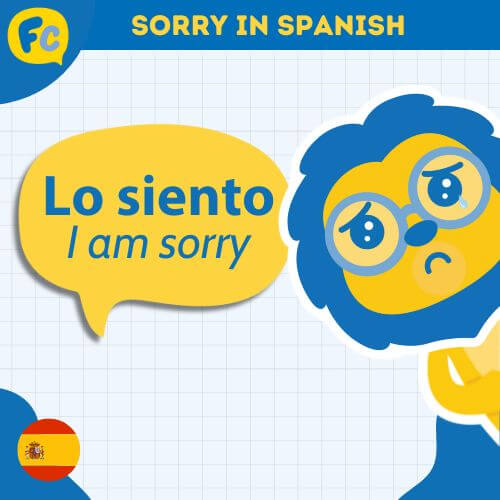
👉 For starters, there are many ways to express the sentiment of being sorry in Spanish.
They will vary depending on the context and the relationship between the speakers.
The wide range of options for saying sorry in Spanish can express and convey varying degrees of regret and apology and even fault and repentance.
Saying sorry in Spanish can go a long way if the tone, situation and use correspond to the context and the person being addressed.
Let’s dissect some of the most common ways of saying sorry in Spanish so your apologies are heartfelt and most effective!
Sorry in Spanish || Lo Siento – The Common Apology
Sorry in Spanish || Perdón – The Next in Line
Sorry in Spanish || Disculpa – The Formal Excuse Me
Sorry in Spanish || The Deep Lament
Sorry in Spanish || The Casual I’m Sorry
Sorry in Spanish || FAQs
Sorry in Spanish ||
Lo Siento – The Common Apology
👉 The most commonly used form of apology in Spanish is Lo siento , which translates to ‘I’m sorry’.
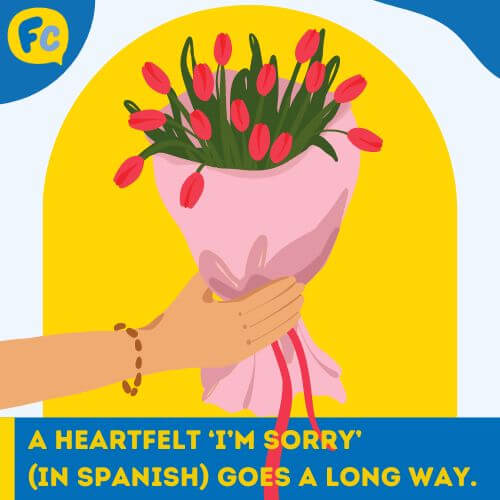
Lo siento stems from the verb sentir , which expresses lament/regret or sympathy.
This form of saying sorry in Spanish is valid for practically any circumstance or context where one wishes to express remorse or to express sympathy with a situation that is detrimental to another, like in the examples below.
Expressing remorse:
Lo siento mucho, no lo volveré a hacer.
English: I’m very sorry, I will not do it again.

Expressing empathy with the pain or negative experience of another person:
| Spanish | English |
|---|---|
| Lo siento, que mala suerte que estés enferma. | I’m sorry, what bad luck that you are ill. |
| Siento que no hayas aprobado el examen. | I’m sorry you did not pass the exam. |

A Handy Tool – the Best Free Spanish Learning App
Get Some Extra Learning Mileage With The Best Free Spanish Learning App Disclaimer: Opinions expressed in this article are based on personal experience of use of the app as well as on supporting extensive research and comparative data online done…
Sorry in Spanish ||
Perdón – The Next in Line
👉 Next in line in the Spanish apology lexicon is the expression perdón , which literally translates to ‘pardon’ and is equivalent to saying ‘I beg your pardon’ or a more casual, ‘excuse me’ in English.
The most frequent use of perdón as an apology is either in the context of ‘asking for forgiveness’ or in situations where one has caused another an inconvenience, an example being when asking someone to move aside so you can pass.
See more examples of use of the apology perdón or perdóname:
Te pido perdón, no lo hice a propósito .
(Forgive me, I did not do it on purpose.)
Perdóname, me deja pasar por favor.
(Excuse me, would you please let me pass?)A ‘sorry’ Top Note – Although lo siento and perdón are often used interchangeably, there is a slight difference between the two when used as a form of apology, even if just on a semantical level.
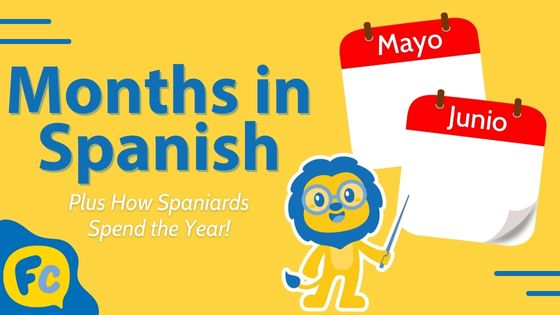
Months in Spanish 📆 || Key Vocabulary and Cultural Insights
Learn How to Say the Months in Spanish and Find Out How Spaniards Spend the Year No matter if you’re talking about birthdays, business trips or holiday plans, months are essential vocabulary you need to know in Spanish. So in…
👉 On one hand, the expression perdón is literally asking the ‘aggrieved party’ for forgiveness.
So the person apologizing is placing the ball being in their court by asking for such forgiveness.
Lo siento on the other hand, expresses an apology without necessarily asking the aggrieved person to forgive you or any explicit action on their end.
The person who is apologizing with lo siento is mostly expressing repentance, which tends to be of a deeper nature, in comparison to perdón .
Sorry in Spanish || Disculpa – The Formal Excuse Me
Disculpa is a more formal and polite way of conveying an apology, such as in the examples below.
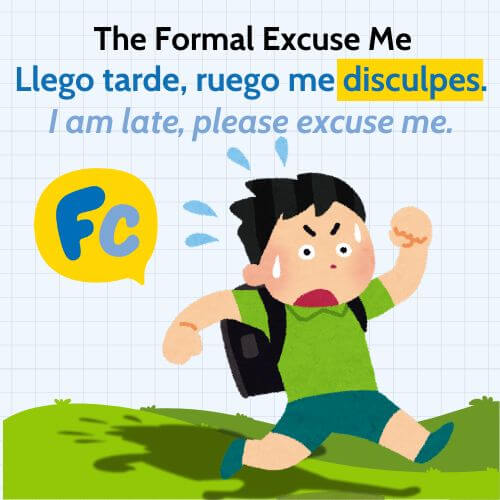
| Spanish | English |
|---|---|
| Llego tarde, ruego me disculpes. | I am late, please excuse me. |
| Te pido disculpas, fue un error. | I apologize, it was a mistake. |
Disculpa can also be used as a more formal way of saying ‘excuse me’.
👉 For instance, if you need to interrupt a conversation or a meeting at work or approach a stranger on the street and ask for directions, diculpa/e is the correct term to use, like in the examples below:
disculpa (informal you, singular)
Disculpa, me pasas la sal por favor.
(Excuse me, can you pass me the salt please?)disculpe (formal you, singular)

¿Disculpe, sabe dónde puedo encontrar la farmacia más cercana?
(Excuse me, do you know where I can find the nearest pharmacy?)Disculpe, le llaman por teléfono.
(Excuse me, you have a phone call.)
8 Ways to Say Hi in Spanish – Say Hello Like a Local
Different Ways of Saying Hi in Spanish, Fit for Each Occasion! There are many ways to say hello in Spanish, based on several factors… Is it a formal or an informal occasion? Are you close friends or have you just…
Sorry in Spanish || The Deep Lament
👉Another way to say sorry in Spanish that expresses a deeper sense of regret and consternation is lo lamento , usually expressed in more somber scenarios.
Lo lamento could be translated along the lines of ‘I am deeply sorry’.
For instance, if you accidentally drop a friend’s phone and nothing happens, you will most likely say lo siento or perdón .
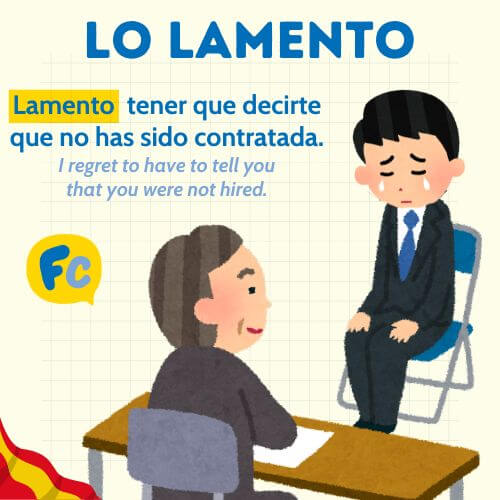
However, if said phone falls, cracks open and breaks, then maybe lo lamento would be more in order, like in the example:
| Spanish | English |
|---|---|
| Lo lamento, se me ha estropeado tu móvil. | I’m really sorry, I broke your cell phone. |
| Lamento tener que decirte que no has sido contratada. | I regret to have to tell you that you were not hired. |
Sorry in Spanish || The Casual I’m Sorry
When in a more casual or relaxed setting or when with friends and family, here are some more informal ways of saying I’m sorry in Spanish, either to express regret, repentance or sympathy:

Me sabe mal or me sabe fatal (equivalent to saying ‘I feel bad about it’)
Me sabe mal que no te pueda acompañar. (I feel bad that I cannot accompany you.)
¡Mil disculpas! (literally, ‘a thousand apologies’ and akin to saying ‘my apologies’)
Mil disculpas, se me ha olvidado traer el vino. (My apologies, I forgot to bring the wine.)
Lo siento en el alma (I’m sorry from the bottom of my heart, another way of saying ‘I’m deeply sorry’)
Lo siento en el alma si te ha sentado mal lo que dine. (I am deeply sorry if you got offended by what I said.)
Ha sido sin querer (It was unintentional)
Se me ha caido tu móvil, ha sido sin querer. (I dropped your cell phone, it was unintentional.)
No lo hice a propósito (I didn’t do it on purpose)
Choqué el coche, no lo hice a propósito. (I bumped the car, I did not do it on purpose.)
Te debo una disculpa (I owe you an apology)
Te he mentido, te debo una disculpa. (I lied to you, I owe you an apology.)
| Spanish | English |
|---|---|
| Me sabe mal or me sabe fatal | I feel bad about it |
| Me sabe mal que no te pueda acompañar. | I feel bad that I cannot accompany you. |
| ¡Mil disculpas! | My apologies (literally, ‘a thousand apologies’) |
| Mil disculpas, se me ha olvidado traer el vino. | My apologies, I forgot to bring the wine. |
| Lo siento en el alma | I’m sorry from the bottom of my heart |
| Lo siento en el alma si te ha sentado mal lo que dije. | I am deeply sorry if you got offended by what I said. |
| Ha sido sin querer | It was unintentional |
| Se me ha caído tu móvil, ha sido sin querer. | I dropped your cell phone, it was unintentional. |
| No lo hice a propósito | I didn’t do it on purpose |
| Choqué el coche, no lo hice a propósito. | I bumped the car, I did not do it on purpose. |
| Te debo una disculpa | I owe you an apology |
| Te he mentido, te debo una disculpa. | I lied to you, I owe you an apology. |
Now you’ve mastered “How to say Sorry in Spanish”, why not check out these Spanish essentials?
👉 The Super Powers of Y in Spanish
Sorry in Spanish || FAQs
Is it pedir disculpas or ofrecer disculpas in Spanish?
Disculpas (in English, ‘apologies’ or ‘excuses’) is defined as the reason that is given or the cause that is alleged to excuse or to purge a fault.
So, with said meaning in mind, it is logical that the actions of giving, offering, asking, begging, pleading, etc. for such apologies are viable and admissible scenarios.
So, since pedir disculpas would be equivalent to ‘asking for forgiveness’ and ofrecer disculpas would translate to ‘offer apologies’, then both would be grammatically correct phrases in the context of expressing one’s apologies in Spanish.
Note how in the example, pedir disculpas and ofrecer disculpas are practically interchangeable:
Pido disculpas por mi comportamiento. (literally, I ask for your forgiveness for my behavior and more aptly translated to ‘I apologize for my behavior.’)
Ofrezco disculpas por mi comportamiento. (literally, I offer you my apologies for my behavior and more aptly translated to ‘I apologize for my behavior.’)
How do I informally respond to ‘I’m sorry’ in Spanish?
In a more casual and informal context, here are some common ways to respond to an apology in Spanish:
Está bien (It’s ok or ‘It’s alright’)
No es nada (‘It’s nothing’ or ‘No big deal’)
No pasa nada (akin to saying ‘it’s ok’ or ‘It’s alright’)
No hay problema (No problem)
No importa (It doesn’t matter)
No te preocupes (Don’t worry about it or ‘no worries’).
How do Spanish say ‘I’m sorry’?
The most common way to say sorry in Spanish is Lo siento, which translates to ‘I’m sorry’, and is used in the contexts of expressing lament or regret or sympathy.
Lo siento is valid for practically any circumstance or context where one wishes to express remorse or to express sympathy with a situation that is detrimental to another, like in the examples below.
Expressing remorse:
Lo siento mucho, no estuvo bien lo que hice. (I’m very sorry, what I did was not right.)
Expressing empathy with the pain or negative experience of another person:
Lo siento, espero te recuperes pronto. (I’m sorry, I hope you get better soon.)
Siento que no hayas podido ir al concierto. (I’m sorry you did not get to go to the concert.)
How do you say I’m sorry in Spanish slang?
Here are some casual and more informal ways to say sorry in Spanish, either to express regret, repentance or sympathy:
Me sabe malor me sabe fatal (equivalent to saying ‘I feel bad about it’)
¡Mil disculpas! (literally, ‘a thousand apologies’ and akin to saying ‘my apologies’)
Lo siento en el alma (literally ‘I’m sorry from the bottom of my heart’, another way of saying ‘I’m deeply sorry’)
Ha sido sin querer (It was unintentional)
No lo hice a propósito (I didn’t do it on purpose)
Te debo una disculpa (I owe you an apology)
What is a polite way to say ‘I’m sorry’ in Spanish?
In Spanish, the term disculpa is a more formal and polite way of conveying an apology. Disculpa can also be used as a more formal way of saying ‘excuse me’.
Other ways of phrasing disculpa would be (in both the informal you, singular and the formal you, singular), as follows:
Discúlpame / Discúlpeme (‘excuse me’ or ‘forgive me’)
Te pido disculpas / Le pido disculpas (literally, ‘I ask for your forgiveness’ and equivalent as well to ‘I apologize’)
Ruego me disculpes / Ruego me disculpe (Please forgive me)
Te presento mis disculpas / Le presento mis disculpas (I offer you my apologies)
Want More From LTL?
FANCY LEARNING SPANISH? Check out our online Spanish courses here.
We offer a 7-day free trial to all online students where you can study Spanish 24/7. It doesn’t end there either.
We teach over 10 of the world’s most popular languages 😎
Come and be a part of our amazing community.









